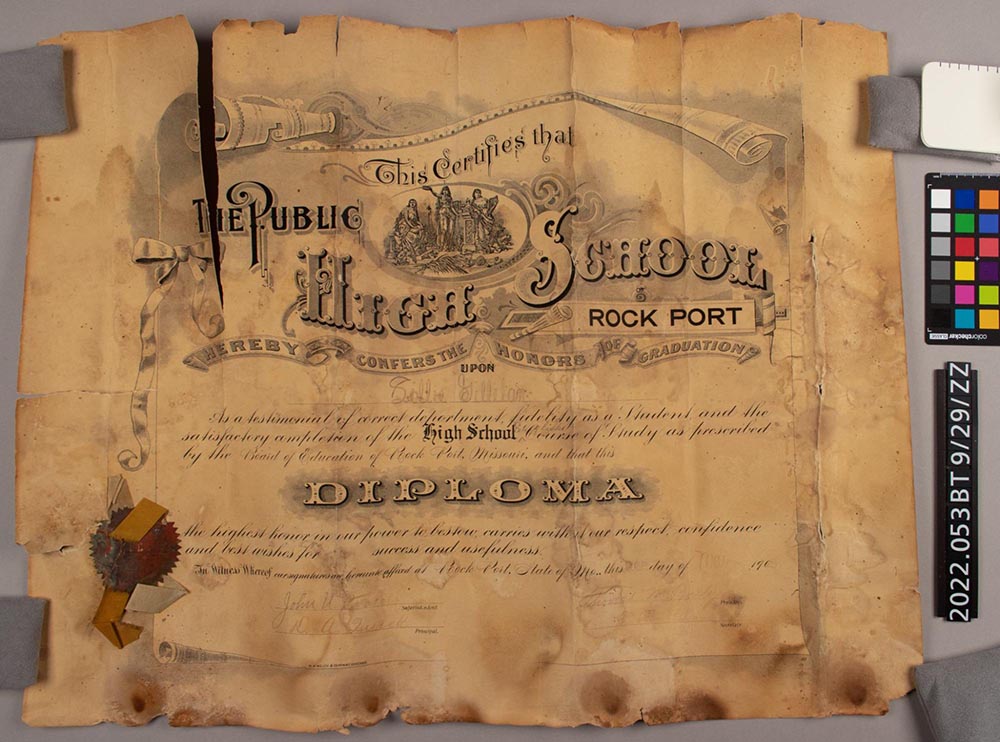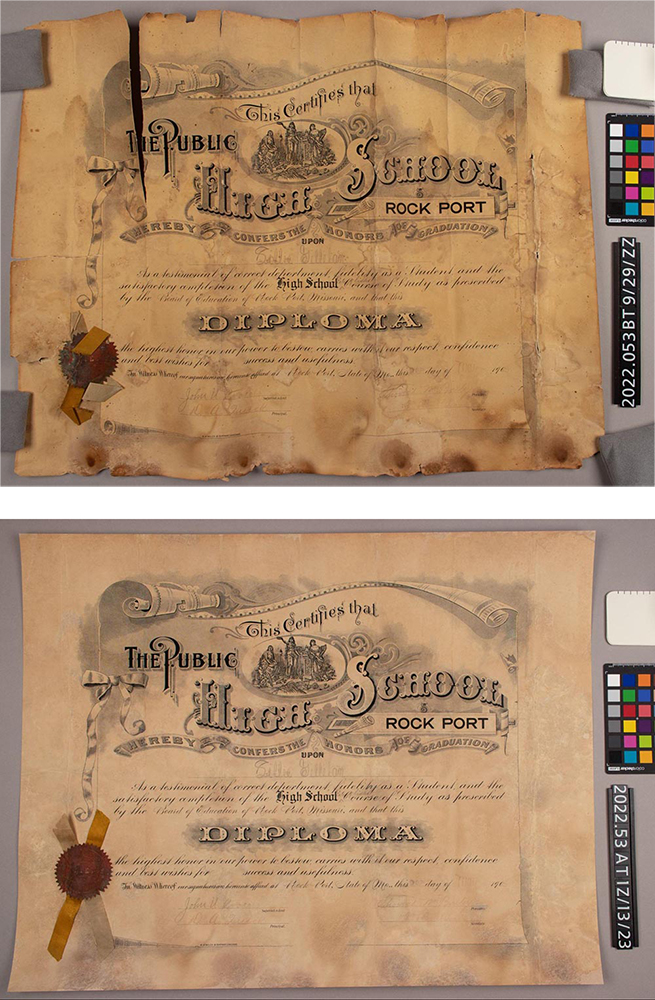The Gerald Ford Conservation Center recently preserved two documents from the life of Lillie Gillilan Chambers (1885-1972). The first was her high school diploma, which was conferred by Rock Port High School in Rock Port, MO, in 1903. The later document was her marriage certificate, issued in 1911 in Hardy, NE. Both documents were large certificates with beautiful decorative elements.
The high school diploma had been rolled for many years, and at some point, a heavy object was placed on top of it, causing several vertical creases and tears to form. The rolled document also came into contact with water, resulting in four evenly-spaced dark stains along the bottom edge and various light and dark tidelines across most of the paper. A red paper seal in the bottom corner had begun to lift and tear, and the ribbons below were deeply creased and stained. These combined damages, in addition to naturally occurring acidic byproducts in the paper and years of improper storage, contributed to the overall poor condition of the diploma.
Similarly, the marriage certificate was so tightly rolled that the heavy-weight, brittle document had broken into several curled pieces by the time it arrived at the Ford Center. Along the broken, brittle tears, there was some loss of media where the top layer of the paper was missing. This paper was also exposed to moisture, as evidenced by the dark brown tidelines visible across the front and back.

In this before-treatment image of the reverse side of the document, the curvature of the paper is very clear, and the extent of the water staining is visible.
The first step was to reduce the dust, dirt, and grime that had accumulated on the documents. At this time, the circular red seal and ribbons were removed from the diploma to be addressed later during treatment.
Because both documents had a combination of printed and handwritten inks, each type of ink had to be tested to determine if the documents could be safely washed without removing any inks. Washing helps to reduce acidic byproducts, dirt, and grime trapped in the paper, which often improves the overall paper tone. The two documents were washed several times in baths of pH-controlled deionized water, releasing degradation products from the papers and minimizing the appearance of the darker stains. Additional local stain reduction addressed the unsightly brown tidelines on the marriage certificate.
In order to provide structural support for the extensive tears and deep creases, both documents were lined, or adhered, onto a piece of Japanese paper using reversible adhesives. Although much of the staining was reduced during the washing process, some of the darkest areas were toned by hand using color pastel media to provide more aesthetic consistency.
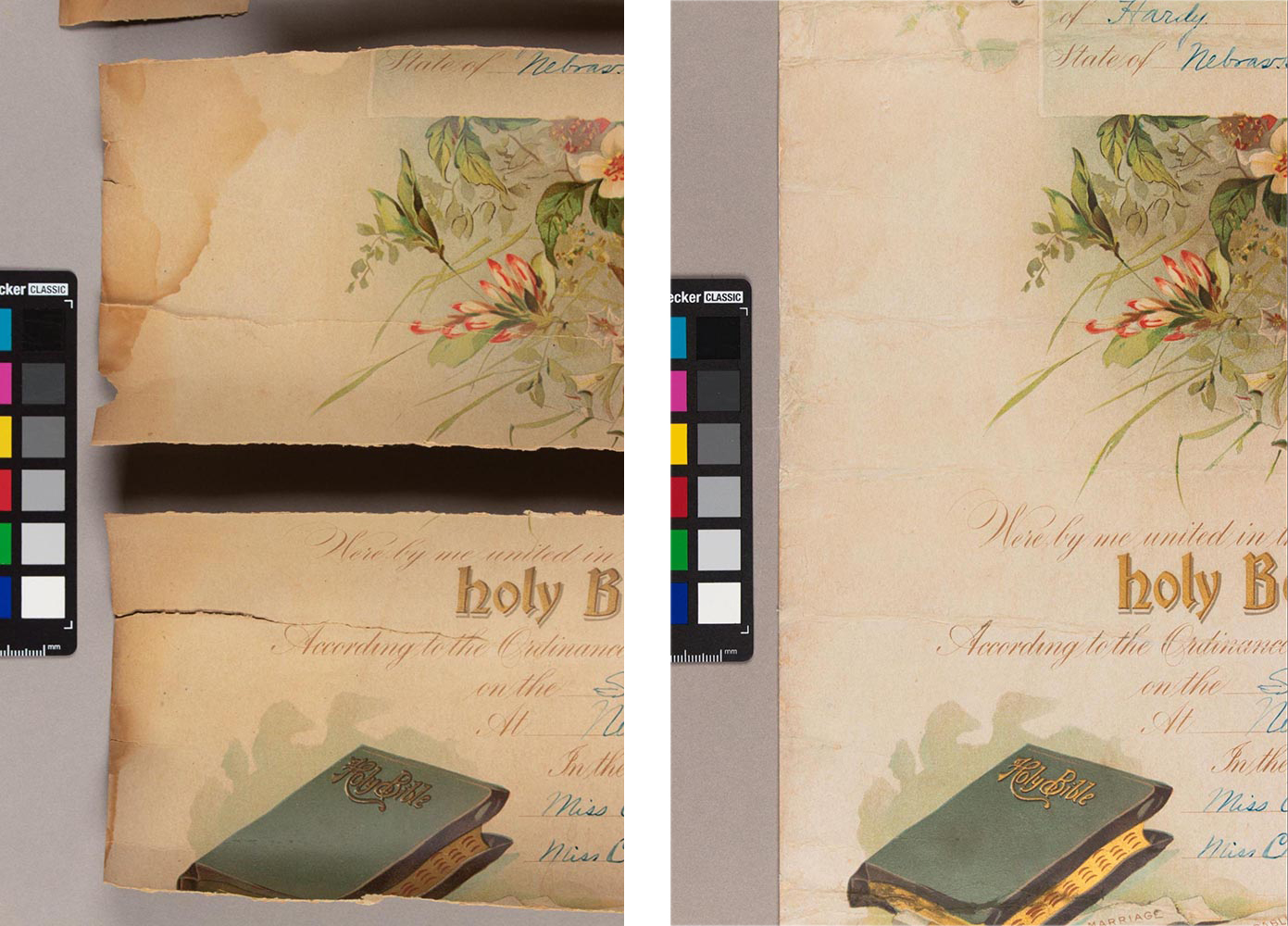
These before- and after-treatment details show the results of washing and toning for the marriage certificate.
The ribbons from the diploma were washed, and the damaged paper seal was adhered onto a medium-weight Japanese paper for structural support. Some points in the seal that had been broken or lost were shaped from the new lining paper. The point losses and breaks in the seal were toned to match the color of the seal. The cleaned ribbons were re-adhered to the diploma in their original location and the seal was adhered over top of the ribbons.
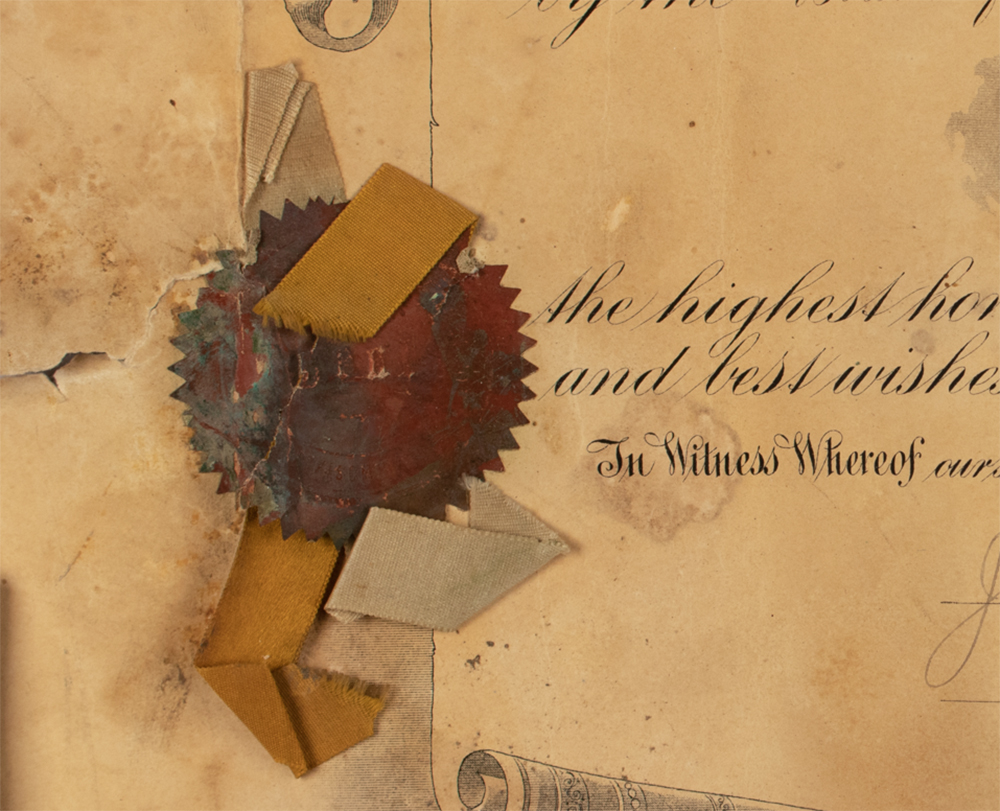
Before treatment, the seal in the corner of the document was torn. The ribbons were deeply creased and dirty.
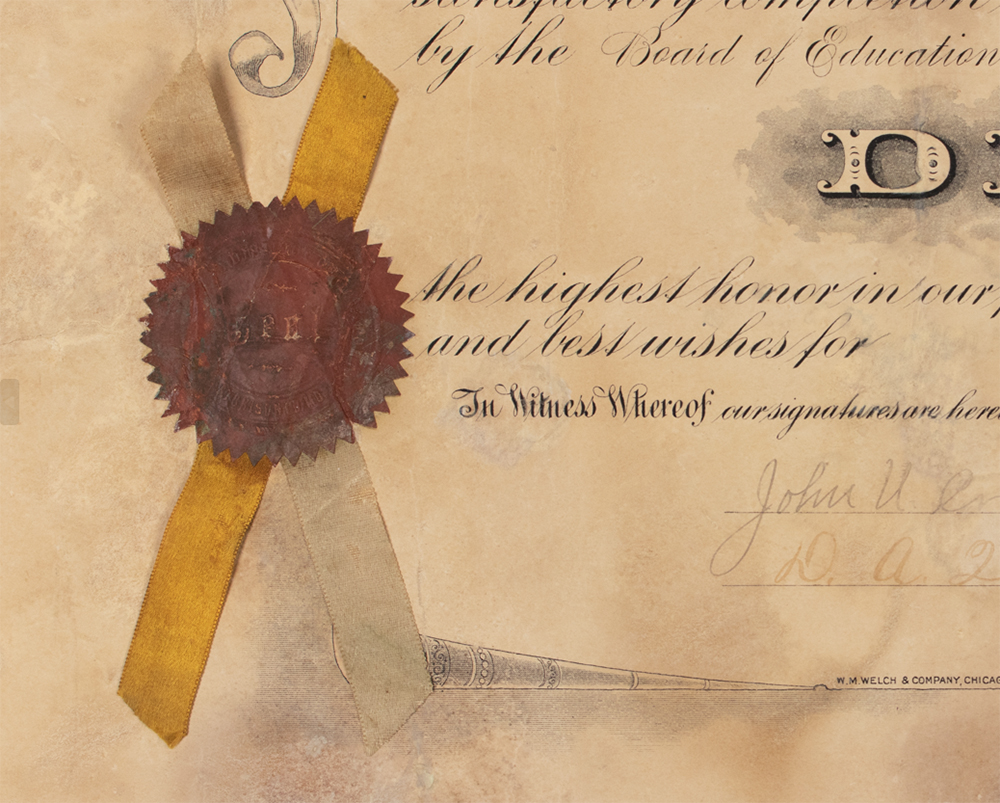
After treatment, the ribbons are cleaner and lay flat. The Japanese paper lining on the seal provides support to protect the seal from breaking again from the distortion of the ribbons underneath.
After treatment, both documents are much cleaner, structurally stable, and better preserved for the future. The documents were hinged to acid-free, lignin-free mat boards so they can be framed and enjoyed by Lillie Gillilan Chambers’ family for many years to come.
During the course of her life, Lillie Gillilan Chambers lived in several Midwestern states. Growing up, her family farmed in Missouri and Nebraska. She met her husband, Philetus “Pete” Chambers in Hardy, Nebraska. They would then move to Colorado, where Pete passed away in 1938, and Lillie relocated to Kansas, where she lived until 1972.
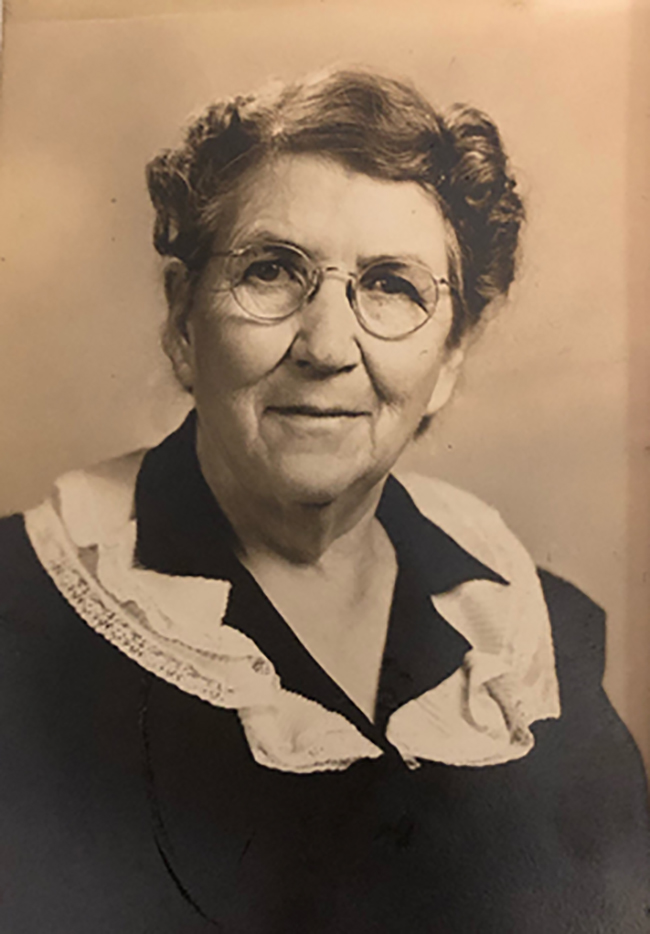
Lillie Gillilan Chambers. Image source: https://www.findagrave.com/memorial/82934825/lillie-chambers

